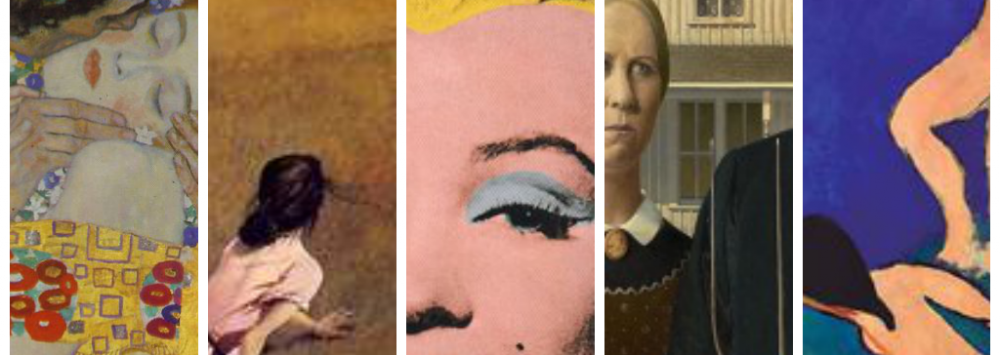Victor Vasarely
By Eunice Cho
Biography:
Victor Vasarely was born April 9, 1906 in Pécs, Austro-Hungarian Monarchy. As a young adult, he studied medicine at Budapest University, but switched to studying traditional art after two years. One of the academies he studied at was Műhely, which was widely considered to be the premiere Bauhaus school in Budapest. He married his fellow student Claire Spinner (whom he would have two sons with) when he was 27, and moved to Paris two years later. There, he worked for various advertising agencies by day and made his own art by night. Eventually he made a successful career out of his own art, which despite evolving through various stylistic periods, maintained the scientific method and objectivity which marked all of his works. He died March 15, 1997, at the age of 90 in Paris.
Movement:
The Op Art movement emerged in the 1950s. It evolved from abstract/geometric elements found in Abstract Expressionism, and its artists explored the idea of deception and illusion. They did this by taking a more scientific approach to creating their works (many based theirs off of mathematical principles), utilizing color, space and form to create a visceral experience of movement and rhythm for the viewer. More specifically, they often played with positive/negative space (the B&W color scheme was popular for its intense contrast), geometric patterns, and the color gradient to alter the viewer’s depth perception.
Style, Subject Matter, Technique & Their Influences:

Vasarely created many different series of works, ranging from “Homage to the Hexagon” to “Vega.” As shown above, he made preliminary scaled sketches of his painted works, which he called programmations. For each series, he would create a “color system,” and then assign a specific form/shape to each color.
The Illusion of Movement and the 3-D figure:
-One technique Vasarely used for optical illusion was slicing his forms in various places and shifting them (like in Encelade) along the lines, in order to create intact, yet slightly off center forms.

Encelade (1960), original gouache on paper, 41 x 41 cm
–Encelade also illustrates his technique of simply reversing the positive and negative space in various areas of a particular form. In Untitled, this method allows him to create the impression of a square within a larger circle.

Untitled (no date available), original screened multiple, 22.9 x 22.2 cm
In addition to playing with B&W positive/negative space, he used color gradients to create the illusion of depth, as is shown in Keple Gestalt. In creating depth in certain areas of his forms, he was able to make the object look like it was receding into the canvas.

Keple Gestalt (1968), acrylic on canvas, 160 x 160 cm
Yet another way Vasarely depicted 3D forms through his 2D platform was by simply bending parallel lines at certain points in order to create the impression of a contour (like in Zebra). Here, the zebra looks like it is bulging out of the canvas.

Zebra (1950), gouache on board, 20 x 36 cm
Whatever the technique, Vasarely was able to distort and warp images to create illusions in ways that hadn’t been done before. In addition to painting, Vasarely worked with other materials and also did some architecture, wrote two books and made films. He was a strong proponent for the use of computers for design (long before they were widely used), and even required that the Vasarely Foundation install computers.
Compared Artist (21st Century):
Helen Owen works with a variety of mediums such as paint, photography and found objects, but I will focus on her textiles. Although some of her pieces are actually 3-D, they illustrate the same geometric concepts that Vasarely’s 2-D paintings do. As she said on her website, her art “usually has a visual impact through the use of colour, pattern or optical illusion.”
Stressfull to Vasarely’s Untitled

Vega-Nor (1969), acrylic on canvas, 200 x 200 cm

Stressfull, fabric and wood, 70 x 45 x 5 cm
Owen’s “Stressfull” uses the same idea of a sphere bulging out of a 2-D form. The sphere is the main geometric shape, but the “fabric” of the sphere also has a macro-geometric pattern (like Vasarely’s smaller square grid overlaying the larger sphere).
Highly Strung to Vasarely’s Harlequin

Harlequin (1936), oil on canvas, 119 x 76 cm

Highly Strung, fabric and wood, 35 x 67 cm
Here, Owen creates the illusion of depth by bending parallel lines in certain areas.
Warped Imagination to Vonal-Stri

Vonal-Stri (1975), acrylic on canvas, 200 x 200 cm

Warped Imagination, fabric and wood, 35 x 62 cm
Owen’s color gradient emphasizes the illusion of depth that the curves already created (just as Vasarely’s color gradient does for Vonal-Stri’s “tunnel vision” illusion)
Networking to Kroa A–geometric

Kroa A (1970), color aluminum sculpture, 50 x 50 x 50 cm

Networking, fabric and wood, 53 x 62 cm
Owen also plays around with 2-D geometric forms, connecting them in certain ways to make them look 3-D.
* No dates are available for her textiles
Personal Reflection:

“The art of tomorrow will be a collective pleasure or it will not be art at all”
I’d always thought of optical illusions as just cool pieces of art for children’s entertainment, and never even knew that they were part of an actual art movement. While researching Vasarely, I realized why his creations, “scientific” as they were, are considered true pieces of art: He mostly painted them, and used the same principles of design that other artists do, which made me see a connection between his works and that of the Cubism and Color Field movement. In addition, their geometric elements played a large role in his other ventures, such as the art fields of sculpture and architecture.
Bibliography:
Olly Payne. “Victor Vasarely.” Op-art.co.uk: Discover ~ Explore ~ Enjoy. Last
modified 2012. http://www.op-art.co.uk/victor-vasarely/.
“Biography.” Helen Owen: Contemporary Art by Helen Owen – Paintings, Botanical
Prints, Textiles & Greeting Cards. Last modified 2014.
http://www.helenowen.com/sub.php?subid=138.
“Biography.” Vasarely: The Official Artist Website. http://www.vasarely.com/site/
site.htm.
